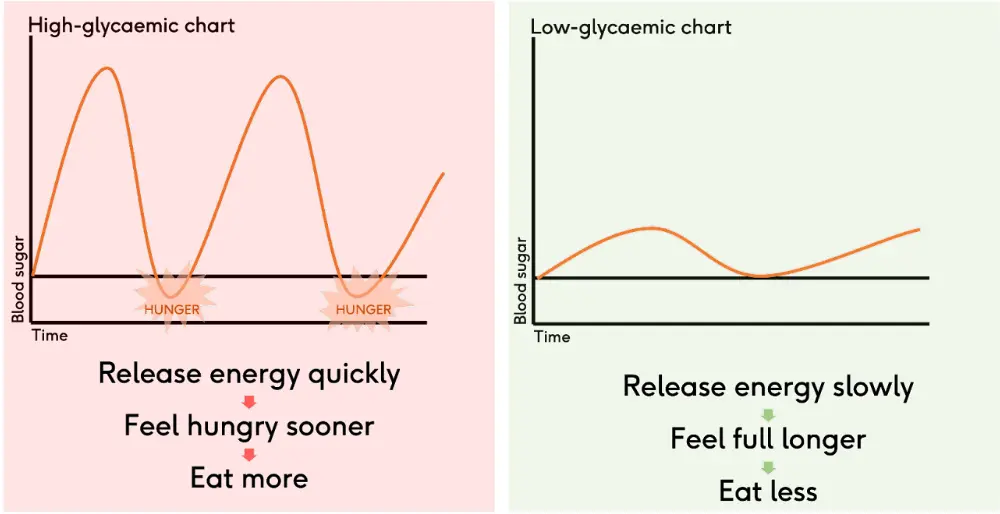Welcome to week 2 from the Lifestyle Medicine team.
We’re often asked what is the best diet for weight loss. Interestingly, having looked at a lot of recent research, it seems that there is no one best diet for weight loss. Importantly, finding a way of eating that reduces how much high sugar and processed foods you eat as well as high sugar drinks you drink, and more importantly one that you can commit to and enjoy, are key factors to help you lose weight whilst also benefiting your health. This way of eating is suitable long term as it can also help you maintain your weight loss (1).

We’ve written some eating guides that are designed to help you understand a little more about the different eating approaches that support a healthy weight and reduce sugar and processed foods: Low Carbohydrate, Mediterranean and Paleo eating guides. We’ve also created our Boots Online Doctor Core Meal Plan. This combines all the healthy aspects from these eating plans and you can use it as a guide over the first few weeks while you start changing your eating habits. It’s also suitable to follow in the long term.
We’d like to invite you on a journey, to move away from a diet mindset where you’re either “on” or “off” a diet, or being either “good” or “bad”, to change from this old and outdated way of thinking to embrace a new mindset of “eating well for life”.
We don’t expect this to happen overnight; we know that it is challenging to change how you’ve always eaten and that altering your mindset and behaviour patterns will take commitment and determination.
We’re here to support you. We’ve created this series that will not only help you make long lasting changes to your weight, but also to your energy levels and even your mood, plus improving your long term health outcomes.
Take it one step at a time and work through the information at your own pace. You might want to keep a notebook handy for some notes. All you need to do is to start taking some small steps and make one change at a time. We recommend that you download and use our food and symptom diary. Using this diary can help you to gain some insights into how the food and drink you consume makes you feel. Some foods may initially make you feel energised but you may also notice a slump in your mood or energy soon afterwards.
Other foods might keep you feeling full and you may notice that you experience less cravings when you eat these. By noticing how what you eat impacts the way you feel, these insights will help you take control of the food choices you make. In turn, this will help you learn which foods suit you and make you feel satisfied and energised. This can support you to make food choices that help you to lose weight more easily and to feel good.
How to eat
The key to eating for weight loss is to eat food that helps balance your blood sugar levels, keeps you full for longer and balances your energy. When your blood sugars are better balanced you'll notice that you experience less food cravings or energy dips and are less tempted to snack on high sugar foods.
The importance of blood sugar control

Understanding blood sugar balance and how it impacts your eating habits and if you gain or lose weight is a really important concept, so read carefully. When you eat a food, it is broken down into smaller parts (nutrients) and sugars. These are then released into your blood affecting your blood sugar levels.
If you look at the red graph on the left, you can see the impact of eating high sugar, high glycaemic load (GL) foods several times over the course of a day. You can see the blood sugar level is swinging between high and low. On the green graph, on the right side, you can see what happens when you eat low sugar, low glycemic load foods; your blood sugar rises and falls more gently, and stays more balanced.
These graphs show the effect of how the type of food you eat affects your blood sugar over the day. Looking at the red graph on the left side, you can see that when you eat high sugar foods (high GL foods), you have a quick rise in blood sugar as these foods are easily broken down into sugars and absorbed into the blood. This is then followed by a quick fall in blood sugar, creating these spikes.
Some examples of high GL are chocolate, cakes, pasta, fizzy drinks and even white bread and rice.
When high sugar levels circulate in your bloodstream, your pancreas produces insulin in response, to reduce and normalise your blood sugar. High levels of sugar in your blood for long periods of time can cause damage to your blood vessels. If your blood sugar levels become very high, the pancreas can overcompensate by producing more insulin than is needed and so too much sugar is moved out of your blood and into your cells for safe storage and, as we can see from the graph, your blood sugar levels will drop dramatically.
This means you'll feel tired, hungry, irritable, have difficulty concentrating and will find you'll start craving for more high sugar foods and stimulants like coffee to reboot your blood sugar levels.

So you can see that you can end up on a blood sugar roller coaster over the day as your body tries to stay in balance. This blood sugar roller coaster works the pancreas very hard and if you eat a high sugar (high GL) diet over a long period of time you start to become less sensitive to insulin which can lead to insulin resistance, weight gain (2) and ultimately to type 2 diabetes. Symptoms of insulin resistance include experiencing low energy and brain fog and you may find that you need or crave stimulants like sugar and coffee to keep you going. In the long term. This leads to:
- weight gain
- difficulty losing weight
- low energy
- low mood
- heart disease
- high cholesterol
The green side of the chart shows the effect of eating a low sugar (low GL) diet. When you eat this way you're less likely to experience blood sugar imbalances, which will mean you're less likely to have as many cravings. You’ll also notice that you feel fuller for longer, which will help you to eat less with less effort. Eating this way puts less pressure on your pancreas to release insulin and you'll experience more stable blood sugar balance. Energy from what you eat will be released slowly and steadily so you'll find that you'll feel more energised for longer periods of time. As a result you won’t need to eat as regularly and are less likely to get cravings for high energy foods. Take a look at our low carbohydrate diet guidelines to understand more about how to eat in this way. Slow release carbohydrates take longer to break down so the pancreas has longer to react and it can release the correct amount of insulin. This means there are less extreme changes in your blood sugar levels over the day. Releasing sugar more slowly helps you feel full for longer so you can eat less over the day without feeling hungry. So this is great for your weight loss plan and a great way to reset eating habits.









